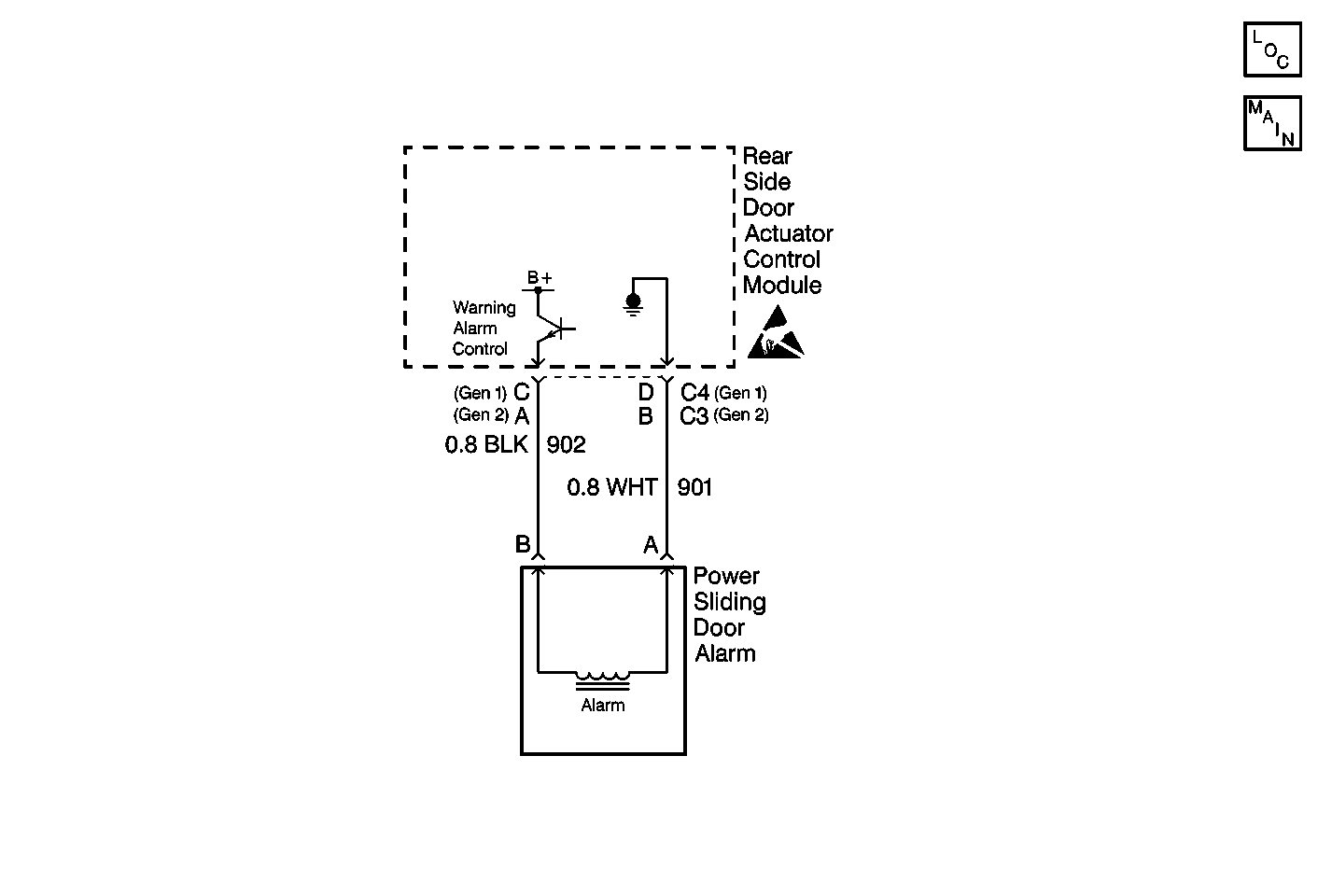
Circuit Description
The rear side door actuator control module monitors the position of the transaxle shifter through the transaxle range switch. If the transaxle is shifted out of the PARK position while the PSD is open, the rear side door actuator control module sounds the power sliding door alarm to warn the driver that the sliding door is not fully closed.
If the transaxle shifter is out of PARK and the operator commands the PSD to open, the rear side door actuator control module sounds the power sliding door alarm (for as long as the PSD open/close switch is pressed) to warn the driver that the power sliding door has been inhibited from opening.
In addition, during PSD diagnosis, the power sliding door alarm is also used to read Diagnostic Trouble Codes (DTCs) stored in the rear side door actuator control module.
When the transaxle is in PARK, the transaxle range switch sends a B+ signal to the rear side door actuator control module through CKT 275. When the transaxle is shifted out of PARK, the transaxle range switch removes the B+ signal to the rear side door actuator control module.
The rear side door actuator control module energizes the power sliding door alarm (causing the power sliding door alarm to sound) by sending B+ through CKT 902. The power sliding door alarm is grounded through CKT 901.
Diagnostic Aids
| • | Inspect for the following conditions: |
| - | An open in CKT 901 |
| - | An open in CKT 902 |
| - | A faulty alarm |
| • | An intermittent failure may be difficult to detect and to accurately diagnose. Faulty electrical connections or wiring causes most intermittent problems. When an intermittent condition is suspected, inspect the suspected circuits for the following conditions: |
| - | Poor mating of connector halves |
| - | Backed out terminals |
| - | Improperly formed or damaged terminals |
| - | Wire chafing |
| - | Poor wire-to-terminal connections |
| - | Dirty or corroded terminals |
| - | Damaged connector bodies |
| - | A broken wire inside the insulation |
| • | Use a J 35616 whenever a diagnostic procedure requests probing or inspecting a terminal. Using the J 35616 ensures that no damage to the terminal will occur. Using the J 35616 provides an estimate of whether the contact tension is sufficient. |
Test Description
The number(s) below refer to the step number(s) on the diagnostic table.
-
This step tests for a faulty alarm.
-
This step determines if CKT 901 is open or if the PSD control module is faulty.
-
This step determines if CKT 902 is open or if the PSD control module is faulty.
-
This step tests for an open in CKT 901.
Step | Action | Value(s) | Yes | No |
|---|---|---|---|---|
1 | Was the Power Sliding Door (PSD) Diagnostic System Check performed? | -- | Go to Step 2 | |
2 |
Does the power sliding door alarm sound? | -- | Go to Step 3 | Go to Step 5 |
3 |
Does the resistance measure less than the specified value? | 2 ohms | Go to Step 4 | Go to Step 6 |
4 | Using a J 39200 DMM, measure the resistance between the rear side door actuator control module harness connector C3 terminal B and the power sliding door alarm harness connector terminal A. Does the resistance measure less than the specified value? | 2 ohms | Go to Step 8 | Go to Step 7 |
5 | Replace the power sliding door alarm. Refer to Door Open Alarm Replacement . Is the repair complete? | -- | Go to Step 9 | -- |
6 | Repair the poor connection or open in CKT 902. Is the repair complete? | -- | Go to Step 9 | -- |
7 | Repair the poor connection or open in CKT 901. Is the repair complete? | -- | Go to Step 9 | -- |
8 | Replace the rear side door actuator control module. Refer to Rear Side Door Actuator Control Module Replacement . Is the repair complete? | -- | Go to Step 9 | -- |
9 |
Does the PSD operate normally? | -- | System OK |
